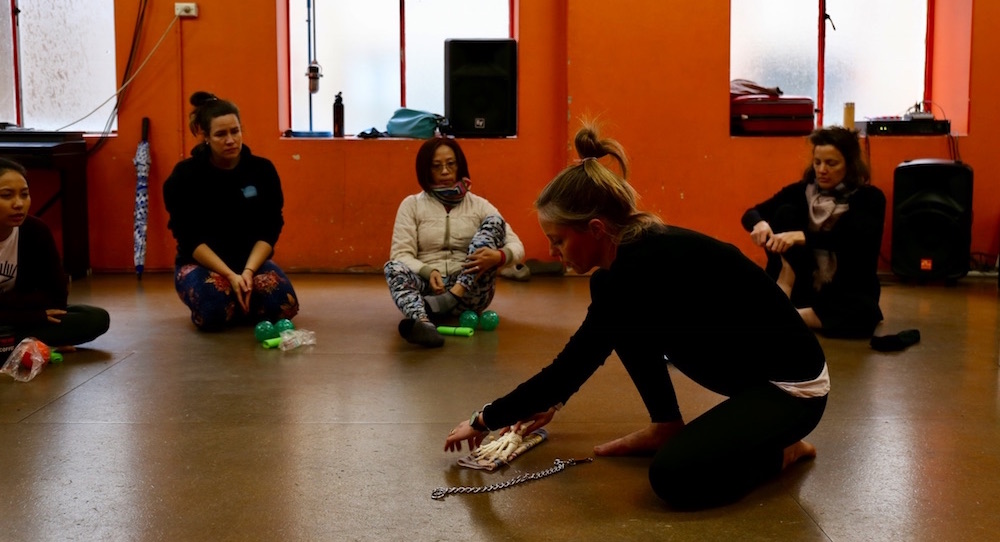“Our feet are our foundation,” says biomechanics educator Bea Glendenning of I Can Move. “To build a strong foundation, you must make it heavy and wide. Our feet are also our propulsion, and we want our propulsion platform to be light and narrow. A healthy foot switches between these two modes in a spilt second.”

Bea Glendenning. Photo courtesy of I Can Move.
Glendenning facilitates experiential anatomy workshops for dancers, performers, sports people and for all people interested in using their body more efficiently. She draws upon the Franklin Method, a somatic movement education approach designed by Eric Franklin. The Franklin Method uses practical enquiries into anatomy and physical function through palpation, movement and imagery, and observation of the anatomy. It uses these strategies to increase physical function and efficiency.

Bea Glendenning. Photo courtesy of I Can Move.
Glendenning and I Can Move ran a Functional Feet workshop on 15 June, which was designed as an introduction to foot function using strategies from the Franklin Method. In the workshop, Glendenning expertly guided participants through the range of motion of feet, including ankle flexion and extension, and the relationship of the talus bone to the bones of the feet in flexion and extension. TheraBands were used to increase proprioceptive awareness, as well as offer resistance to range of motion. The workshop also considered the two modes of foot function: absorption and propulsion, and how they relate to the anatomy of the entire leg. The bones of the tibia and fibula work in collaboration, in rotation and counter rotation, with the bones of the foot, and exercises in resisting this cooperation between these bones restricted the ease and range of movement in the foot.

Bea Glendenning. Photo courtesy of I Can Move.
The Franklin Method was developed originally for dancers and, much like other body practices such as Pilates, has become widely appropriated and applied in the general population. The functional foot workshop was designed to educate about foot function for anyone, but it is simple to translate these learnings directly into dance practice. For example, absorption anatomy and imagery for pliés and transitions, and in propulsion anatomy and imagery for relevé and allegro.

Functional Feet workshop. Photo courtesy of I Can Move.
If you are a teacher, you will find in the Franklin Method new perspectives on cueing for better alignment and more efficient function. If you are a dancer, you will find increased and sensitivity to the of micromovements, anatomical and sensory awareness of your body. This translates to more efficient function and technique. During a proprioceptive task, one participant said, “When you visualise it (the functional anatomy), you get all of the mechanics working.” Carrying a fixed idea of the alignment of the bones eliminates cooperative micro-movements and impacts overall function. In this workshop, using techniques of the Franklin Method, Glendenning draws attention to the patterns and relationships between the bones enhancing their function.
By popular demand, Glendinning will be repeating the workshop Cueing the Dancer for Posture and Pirouettes using the Franklin Method at The Space, Prahran on the 12 of August. Dance Informa attended the earlier edition of this workshop in May 2018, and you can read about that workshop here.
Find out more about Bea Glendinning at www.icanmove.com.au. Find out more about the Franklin Method at www.franklinmethod.com.
By Tamara Searle of Dance Informa.

















